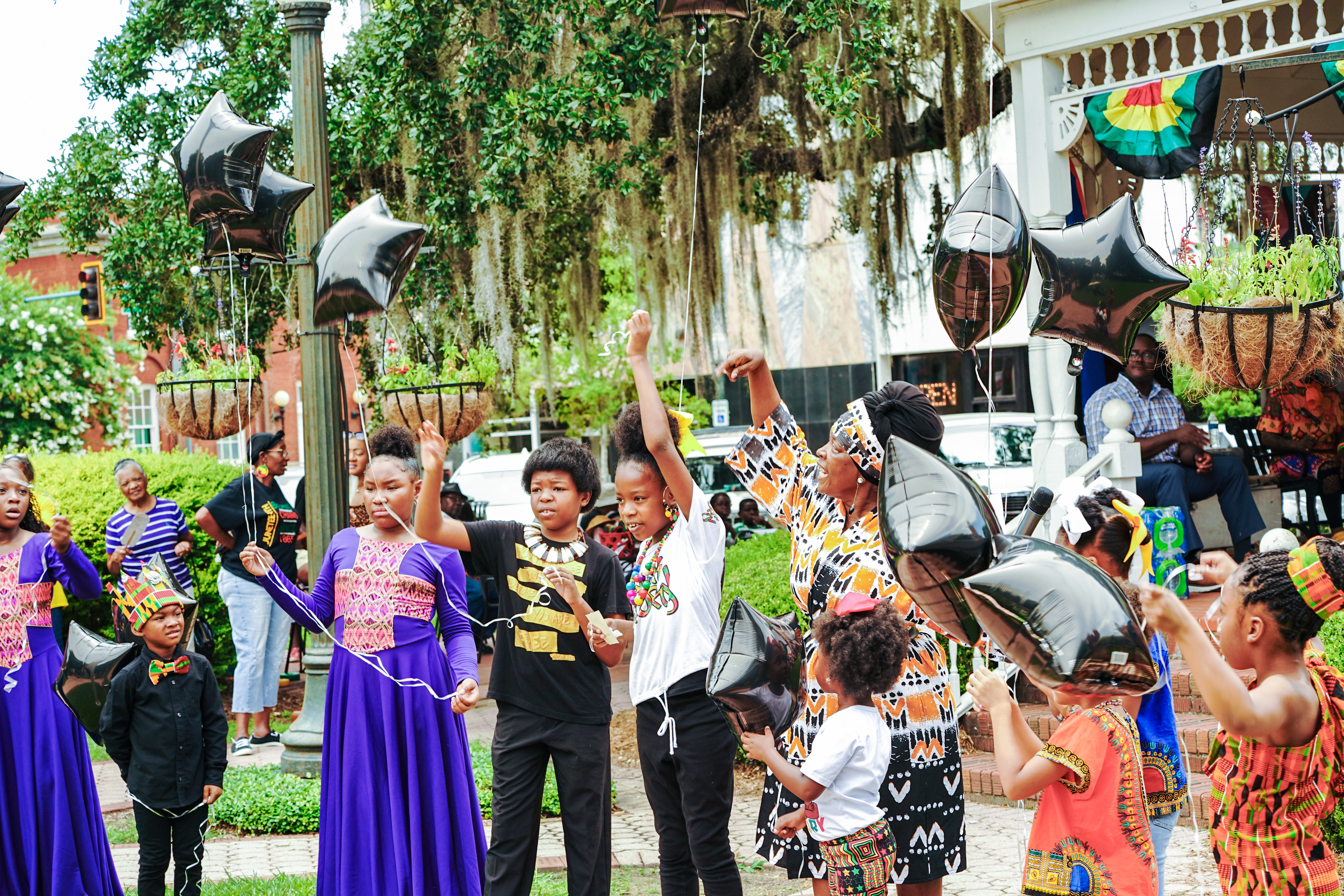Built on a Curse – Part 3
Published 12:58 pm Sunday, August 18, 2024

- The Carnegie family was hit particularly hard by the curse.
|
Getting your Trinity Audio player ready...
|
We have been tracing the lives of those that lived in what is said to be cursed, the Dungeness mansions, from the first to the last, number three. The first Dungeness was built by General Oglethorpe. The Millers built the second one and the Carnegie family built and occupied the third one. This was a very large family so we will only look at the lives of the nine children, although the grandchildren had the curse visit them, too. With alcoholism so prevalent in this family, you can’t help but think this was their curse. In case you haven’t been keeping score, so far we have ten early deaths.
Another early death was that of Curtis Carnegie. He described his cousins as, “spoiled brats who would drink themselves into oblivion beneath the oaks”. Curtis died in his early 30s, a result of his drinking.
Thomas Morrison Carnegie is another example. He was the fifth child, fourth son, of Thomas and Lucy Carnegie. Known to have odd habits and a drinking problem, he could be found riding his horse all over the island at odd times of the night, throwing seeds from palm trees everywhere. Relatives said it was because he was accidentally shot in the head when his brother was cleaning his .22 rifle. When he was growing up, he was Lucy’s favorite child.
The person who seemed to have suffered the most by the curse was the oldest son, William. The death of his wife, Gertrude, was his destruction. She was very young, only in her 30s, when she died of diphtheria. William became hysterical and had her buried outside of the bedroom window, so he could gaze at her grave in his loneliness. That night, after everyone went home, William and his cattle manager, dug up her cold, stiff body. William then snipped off her long blonde braided hair, then reburied her. He carried this souvenir for the rest of his life.
He thought leaving Cumberland Island to live in Pittsburgh would help him get over her death. Here he met and married Betty, a large woman with a bad reputation. Lucy was furious and banned the couple from Cumberland and Dungeness. Now, unable to go onto Cumberland Island, William would set on the boat that he and Betty lived on and drink bourbon and gaze longingly at Cumberland.
Betty went a little bonkers herself. Once, she tried to stab William with scissors and another time, she doused him with boiling water. By now, she was always running off with sailors but would return. Finally, in despair, she hung herself. At 47 years old, William died from alcoholism.
It was for child number six, George Carnegie and his wife, Margaret that the house called Plum Orchard was built. It was the furthest house from Dungeness because Margaret wanted to get away from Lucy and her metaling. Margaret and George’s marriage was considered to be the match of the century. It combined two very rich and famous families. The curse hit them in the form of George contracting muscular dystrophy, sometime in 1912. He never walked again. George died just before Lucy.
The other children died young also. Coleman, child number eight, was a bachelor and lived on the third floor of Dungeness. He died in 1911 at the age of 30 from a cold he caught while fishing in New York. Frank, the second child and second son, was also a bachelor. He loved to sail. I couldn’t find out when or how he died.
Daughter Florence was number seven. She and her husband, Frederick, lived in New York where they had three children. They only went to Dungeness for short visits. However, when the caretaker died, they moved into his house, the Grange, which was next to Dungeness.
Andrew II was the third born son. He wanted a house of his own for him and his wife, Bertha and their two daughters, Nancy and Lucy. However, he was his mother’s favorite and she wanted him to stay at Dungeness. She told him that she really needed his help. When this didn’t seem to be working, she forbid him to leave and go out on his own. He was a nervous and up tight kind of guy but because he was a light drinker, he was the mainstay of her nine children.
Andrew, Bertha, and their two daughters, lived in three cramped rooms on Dungeness’s first floor. Bertha supervised the house and was at the beckoning call of the demanding Lucy. Bertha planned parties and smoothed out trouble spots. Another duty she had was losing on purpose when playing bridge with Uncle Andrew. Bertha and Andrew had little privacy. Nearly every evening, the two daughters had to watch their grandmother dress for dinner and gaze at family photos asking about who was in them.
However, the biggest scandal to hit the Carnegies was one brought on by the youngest child, Nancy. At the age of 22, she ran off with the stable hand, James Hever. Some say she was pregnant because when her brothers and sisters looked through the peep hole in the barn, she was observed committing “acts”. When Lucy found out, they were forced to be married. Then she sent them to England hoping to avoid a scandal. However, the press found out anyway and Nancy was a sensational story for a while.
Eventually, Nancy came home and the couple lived on Long Island. This is where their other three children were born. Hever was a heavy drinker and would beat Nancy. When she could no longer stand it, she took the children with her to Cumberland Island. Dungeness was to be her salvation. A family member described her as sad and pathetic. While there she fell in love with Dr. Marius Johnson. One of the grandchildren caught Nancy and the doctor holding hands under a blanket and told Lucy. Knowing that Nancy would be involved in another scandal, Lucy “urged” Marius to go to Africa on Safari.
Then, Hever was diagnosed with cancer. Because of the scandal and his reputation of beating Nancy, no nurse would care for him. Nancy then went back up to Long Island and took care of him at her apartment. He lingered on in considerable pain before he died.
Marius returned after Hever’s death and he and Nancy were married in 1912. They had a child of their own and changed the last name of the Hever children to Johnson. One event shows that Johnson may have inherited the curse from his wife as sometimes had happened to others. This was when he contracted a bad case of the flu and missed the boat that was to take him back to America from England. The boat was the Titanic!
After Lucy’s death in 1916, is when the family really started to fall apart. When the children passed on, the grandchildren inherited but it was not all equal. The drinking problem invaded this generation, too. One was known to sell liquor illegally. He got into trouble when he decided to open a “zoo” next to his “lounge”. It contained snakes, alligators and all sorts of other dangerous creatures. The story is told of one of the grandchildren being attacked by a hammerhead shark that took a bite out of its right leg that left a terrible scar.
By the 1930s, part of the Dungeness mansion was shuttered and dark inside. It began to look forlorn and forgotten. For the grandchildren, it was a place full of mystery with lots of dark corners to explore. When World War II came, so did the military. Dungeness became a barracks and the tower a lookout post. The enemy never made a threat against Cumberland Island. It was said that the alligators and rattlesnakes along with the heat and mosquitoes kept them away. When the War was over, the military left as quick as they could.
Everything had gone up in price and neglect was everywhere at Dungeness. The gardens were now weeds, roads impassable, buildings caved in. Even the family caused vandalism. The beautiful, leather-bound, first edition books that Lucy collected were torn and strewed all over. The parquet flooring was ripped up by one descendant who took it to their home to use there. Florence looked into having the old place restored but the cost was way beyond their means.
Dungeness’s final hour came in a very dramatic way. A few hours after sunset on June 24, 1959, some island workers spotted a fire. The house was old and full of dried pine, old wallpaper and rotting curtains. The fire roared through all the rooms. The glow could be seen all the way to Brunswick. The fire burned furiously all night and by morning there was nothing left but a molten hot shell. It was said to have been started by someone who was pouching on the property. He was confronted by a caretaker and made to leave. With arson in his heart, he snuck back and burned the mansion leaving only charred ruins. He also scuttled the Carnegie family yacht, Dungeness.
After the fire, the ruins sat for many years, abandoned to nature. A developer tried to buy the island to put up condominiums. This is when the Carnegie family left all of their divisive opinions fall away and decided to fight the man in court. In 1972, the Supreme Court ruled that they had the right to sell the land to the National Park Service. Now Dungeness and most of the outbuildings, as well as the whole island, its animals, and the seashore are protected as are several reminders of the fact that fine living took place there. Today the ruins of Dungeness still attracts attention. Its brick towers reach skyward like boney arms trying to get your imagination stirred so you can see the home’s former grandeur.
Because of the untimely deaths that had taken place and are associated to Dungeness, like Henry Lee, Thomas Carnegie, Nathaniel Greene, William Carnegie and the Greene children, as well as the fact that most of the Carnegie children, their spouses and children died from alcohol caused diseases, Dungeness is said to be cursed and haunted. It does seem true because there have been several ghosts who made occasional appearances. One is that of several Dungeness socialites that still come for the parties. They are heard laughing and talking inside the ruins as well as on outside benches.
The most popular story of a haunting is that of a drunk polo player. At one time, there was a polo field adjacent to the mansion’s grounds. One night, in the early 1900s, a group of these players were attending one of the Carnegies’ famous parties. Later that night, one of the players discovered that the bar had run out of his favorite drink. Enraged, he yelled at the bartender, saying that he was hiding the whiskey from him. Then, the drunken guest staggered out of the mansion, mounted his horse and galloped off towards the servant’s quarters down the road. He was sure that his favorite drink could be found there. Because of the darkness of the night and his drunkenness, the polo player did not see a low, overhanging limb that grew down from one of the oak trees that lined the sides of the road. The limb struck him in the head, knocked him off his horse and down onto the road. He was killed instantly. Some residents of Cumberland Island believed that the man lay dead for several days along the roadside before his corpse was discovered. It is said that he is still making that ride down the road at night, for his whiskey.
Also, there is a legend associated with that particular whiskey that our polo player wanted. It was believed to have come from the north end of the island. Amidst the salt marsh grasses and the flooding waters at high tide, this much sought after white lightening was brewed at the still of an elderly black man who knew his way around creating a very tasty brew. This was called “Hush Your Mouth” moonshine. The name came about because when someone would mention this drink, he would be told to, “Hush your mouth”. It was to be known to only the residents of Cumberland Island and the Carnegie’s. Because of their love to entertain, it is a distinct possibility that they bought this elixir from the man who brewed this secret. Thus, the polo player most assuredly drank some and loved it like all the others did.
The stories of the hauntings entered the more modern age, when early in the 1970s, naturalist Carol Ruckdeschel came to Cumberland Island, but never left. While living in one of the servant’s quarters, she saw a very fit looking young man walk down the stairs from the second floor. He was wearing a white shirt and dark pants in the style of the turn of the century. At the time, no one else saw the apparition, but she recalled the legend.
However, one modern incident that could be a part of the curse and is associated with the Island, seems to have morphed and joined in with the hex under which the Kennedy family lives. It is recent, so you will probably remember this event. On September 21, 1996, John Jr., son of John and Jackie Kennedy, and Carolyn Bessette, were married on Cumberland Island at the First African Baptist Church in an ultra-secret ceremony. Three years later, at a young age, John, Carolyn and her sister, Lauren, were killed in a plane crash in July, 1999.





